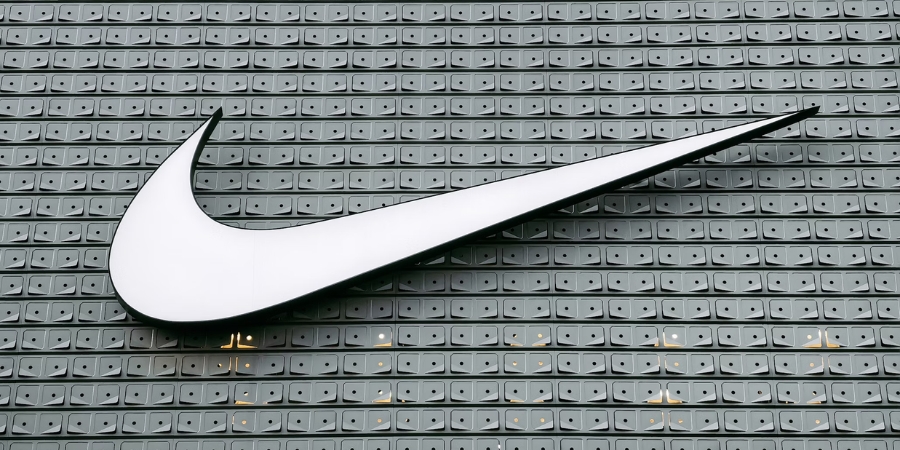
Photo: Unsplash
Nike Shares Plunge After Gloomy Sales Forecast
June 28, 2024
Nike shares took a notable hit on Friday, following a disheartening near-term sales forecast from the sportswear giant, indicating a potential loss of approximately $21 billion in market value. This downturn comes as the company grapples with numerous challenges, including increased competition from new market entrants and a resurgent Adidas in international markets.
Analysts reacted swiftly to Nike’s underwhelming earnings report and somber forecast. KeyBanc Capital Markets analyst Ashely Owens acknowledged the “transition year,” citing the need for lifecycle management of top franchises, a balance between wholesale and direct-to-consumer sales, and investment in new product innovation and brand marketing. Owens maintained a “sector weight” rating on the stock, emphasizing the ongoing pressures from macroeconomic challenges.
Stifel analyst Jim Duffy, cutting his price target by $29 to $88 per share, pointed to potential leadership changes as a source of further uncertainty. Duffy also highlighted doubts about management’s credibility and the need for tangible growth inflection to justify an upside case for the stock.
JPMorgan’s Matthew Boss downgraded Nike to “neutral” and reduced the price target by $32 to $83 per share. Truist Securities and UBS analysts also slashed their price targets, reflecting a consensus that Nike’s fundamental trends are weaker than previously realized.
Morgan Stanley’s Alex Straton downgraded Nike’s rating to “equal weight” from “overweight,” reducing the price target by $35 to $79 per share. Straton expressed concerns about Nike’s path to profitability amid strategic changes and macroeconomic headwinds. Similarly, TD Cowen’s John Kernan lowered his price target to $75 per share, questioning the sustainability of Nike’s position in the mid-tier fashion market.
As a result of these developments, Nike’s shares dropped 18% in early trading on Friday to $77.23, extending the stock’s year-to-date decline to around 28%. Over the past five years, Nike shares have significantly underperformed the broader market, falling 15% compared to a 47.2% gain for the Dow Jones Industrial Average. This continued lag underscores the challenges Nike faces as it seeks to regain its footing in a competitive and evolving market landscape.
Under CEO John Donahoe, Nike initiated a $2 billion cost-cutting plan last year aimed at boosting profit margins and revitalizing stagnant store sales. Despite these efforts, the company’s latest quarterly earnings report did not meet investor expectations. For the fiscal fourth quarter ending in March, Nike reported a 2% decline in sales to $12.61 billion, falling short of Wall Street’s $12.8 billion forecast. Although overall earnings saw a 48% increase to 99 cents per share, gross margins were lower than expected due to significant promotional discounts on older inventory.
Nike’s strategic focus is being tested by an evolving marketplace. Alongside its traditional rival Adidas, the company faces pressure from new competitors in key sports segments, necessitating a shift in sales strategies. High-profile events like the Paris Olympics and Euro 2024 were expected to boost Nike’s market share, especially in crucial regions like China, but the muted revenue outlook has cast doubts on these prospects.
Looking ahead, Nike anticipates a double-digit revenue decline for the coming fiscal year, contrasting sharply with the Street’s consensus of a 1% increase. The company has labeled this period a “transition year” as it navigates through a complex product cycle and shifting consumer demands. CFO Matthew Friend highlighted the macroeconomic uncertainties, particularly in China, and uneven consumer trends in Europe and other global markets as key challenges.
Recent News
Bob’s Stores Closing All Locations Amid Bankruptcy
With nearly 70 years of history, Bob’s Stores has been a beloved fixture in local communities, offering affordable apparel and footwear. Despite its strong community ties, financial struggles have necessitated the liquidation of the company.
E-Bike Rebate Applications To Reopen in Minnesota
Starting Tuesday, July 2, the Minnesota Department of Revenue will reopen applications for the highly anticipated e-bike rebate program.
Instagram Targets Creators With Innovative AI Tools
Meta is intensifying its efforts to promote AI tools on Instagram, with Mark Zuckerberg recently discussing these advancements on a podcast.
American Express Revolutionizes Restaurant Reservations
American Express cardholders in New York and Los Angeles stand to benefit from increased access to popular restaurants, provided they meet the required spending thresholds.
